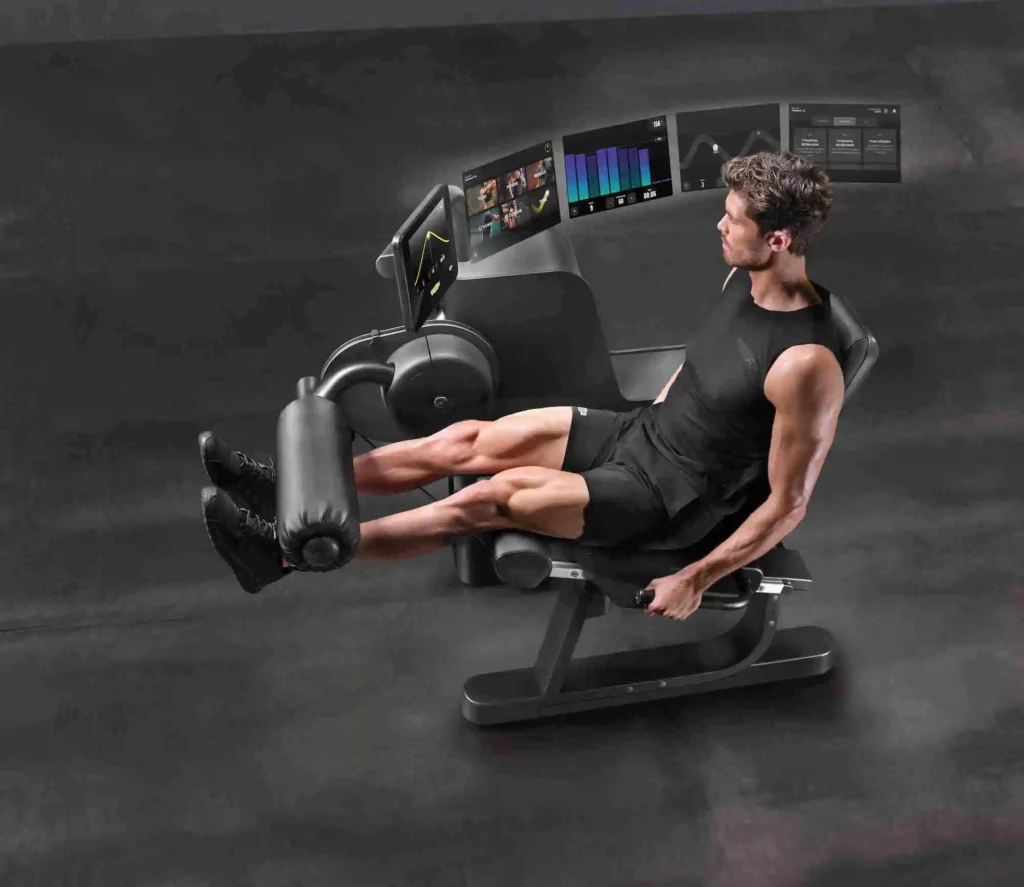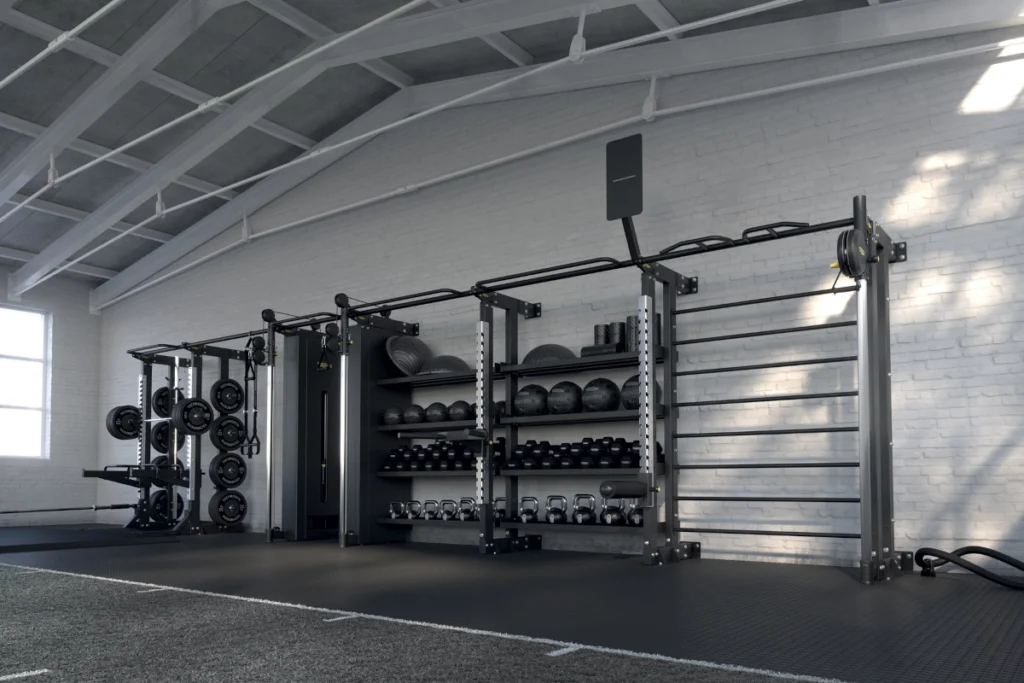Strength Training Is Here To Stay, Says Technogym’s Fabrizio Cecchinelli

Cecchinelli believes social media and science are to thank for the growing popularity of strength training among fitness enthusiasts
According to Fabrizio Cecchinelli, Format Manager at Technogym, there’s no doubt strength training is one of the hottest trends in fitness. In a presentation at last month’s IHRSA 2023 Convention in San Diego, he observed: “No matter what report or source you look at, whether MyFitnessPal, Class Pass or ACSM, from 2020 until 2023, strength training is listed as one of the first three or four big trends, and seems to keep increasing. Since the pandemic, everybody has discovered strength training, even though it never really went away. And we see this in our daily life. In the big box, in performance, in at-home, everywhere, consumers are now much more knowledgeable, much more aware, and much more interested in trying out this type of training.”
What’s behind this surge in interest and participation? Cecchinelli sees two root causes: social media and science.
“I rarely find Instagram posts that say ‘Oh, I did an amazing elliptical training today.’ If you scroll down your feed, every day there is someone lifting weights, thrusting and squatting, because it’s related to physique, to appearance, and this is the era that we are living in today.”
– Fabrizio Cecchinelli, Technogym Format Manager
Strength training is supremely Instagrammable
Beginning in 2010, when Pinterest and Instagram arrived on the scene, many fitness influencers and trainers starting posting, and everyone starting looking at the social media platforms to get workout inspiration. Strength training become an aspirational type of training because people were following their favorite athletes and their favorite influencers doing extremely photogenic strength training workouts.
Cecchinelli pointed out, “I rarely find Instagram posts that say ‘Oh, I did an amazing elliptical training today.’ If you scroll down your feed, every day there is someone lifting weights, thrusting and squatting, because it’s related to physique, to appearance, and this is the era that we are living in today. So we need to face the fact that social media impacted significantly the way people perceive fitness, their goals, and what they want to achieve.”
He sees three main communities of consumers driving the strength training trend: weightlifters, bodybuilders and those regular folks seeking functional strength training. A quick search of strength training keywords reveals that #strengthtraining has 12 million posts, #weightlifting has 22 million posts and #ellipticalworkout has only 50k.
“Weightlifting became incredibly popular in the last 10 years due mainly to these social media phenomena, and due to CrossFit. What CrossFit did to our industry was huge, it changed completely the way people train. High intensity became very popular, weights became very popular, and it raised everyone’s awareness and interest in strength training. It impacted positively and significantly the way people train.”
To put it in perspective, #CrossFit has 68 million posts.
Bodybuilding, whose #bodybuilding has 131 million posts as of this writing, is enjoying a second wave of popularity, completely different from the ones it enjoyed in the 1970s and then in the 1990s.
“If you look at social media, it’s clear that this new type of bodybuilding physique content is targeted specifically toward the youngest population, and that Gen Z is more and more looking into this type of workout,” Cecchinelli said. “As coaches and operators, we need to know and understand how to address this new population and what they are looking for.
The science behind strength training
The second factor driving the popularity of strength training is the scientific community. A search on PubMed, the National Institute of Health’s database of biotechnology information, revealed that in the last decade, the number of searches for scientific evidence related to the benefit of strength training has increased almost fourfold.
Cecchinelli observed: “The scientific and medical communities are now much more knowledgeable, which has improved the reputation of strength training. In the past, when someone had a chronic health condition, strength training was never, never prescribed. It was actually considered dangerous. Today, however, we have tons of evidence showing the benefit of this training methodology for different pathologies and for increasing health and performance benefits.”

It’s generally acknowledged that it’s not only the increase in scientific knowledge that’s driving an interest in strength training, but also its accessibility. Stanford neuroscientist and professor Dr. Andrew Huberman has produced a popular podcast series with millions of listeners in which he talks about health-related topics, one of which delves into the benefits of strength training. Joe Rogan talked on his show with Dr. Peter Attia, a well-known doctor whose specialty is longevity, about the importance of strength training. In addition, there have been numerous blogs and other content from some more practical experts such as influencers and trainers Jeff Cavaliere (former Head Physical Therapist for the New York Mets), and bodybuilder and CrossFit trainer Marcus Filly, both of whom use a scientific approach to create content and programming for strength training.
The rise of female participation
Out of this focus on strength training has also emerged the attitude that “strong is the new beautiful,” attracting many more females to participate in strength training.
“Today we see many more girls and women approaching a barbell than ever before, seeking not only the physical and health benefits, but also the change in physique,” Cecchinelli noted. “No longer are they saying ‘Oh, no, I’m not going to do the squat because I don’t want my legs to get too big.’ That was a stereotype of the past.”
How gyms are responding to the trend
Trainer and consultant Vernon Griffith, who in addition to being a strength training specialist is also a former gym owner, has noticed that in response to this spike in demand for strength training, a huge number of big box gyms and general fitness centers all over the world have been adding racks, platforms, free weights and other equipment to their strength training areas as people have returned post pandemic.
“This increase in awareness and access has had a dramatic impact. People know the benefits, and they want more options for strength training.”
Many new offerings from Technogym meet this growing need. Universe, a modular functional strength platform showcased at IHRSA 2023, was developed to the direct specifications of top strength and conditioning coaches including Griffith. It offers users an unprecedented variety of exercise possibilities, resistance and digital training content, allowing them to train their bodies in the most complete and integrated way.

Griffith feels that Universe, made up of many different “stations” that can be configured and customized depending on the space available, type of training, member demographics and other factors, is “going to change the way people strength train, and make it more accessible to everyone.”
Another exciting offering from Technogym is its Biostrength line that adapts to the user, thanks to a patented technology that relies on artificial intelligence and scientific research to ensure a result that is about 30 percent better than classic training with tools or free weights. Underlying Biostrength is the patented Biodrive system, an electric motor developed with two NASA engineers using aerospace technology that offers six types of resistance. Biostrength enhances neuromuscular activation and provides biofeedback, guiding the user through every aspect of the workout to achieve maximum results in a safe and fun way.
Technogym’s popular Pure line of innovative plate-loaded equipment has been expanded with the addition of belt Squat and deadlift machines, addressing two very popular exercise needs within the strength training methodology in a new, safer, more accessible way.
Enhanced training capabilities
Many people believe they know how to train properly based on content they follow on social media, but according to Cecchinelli and Griffith, many of them need guidance. Technogym’s new strength training content portfolio uses AI to create a proper workout program. The digital component is particularly valuable for gyms that don’t always have coaches available for functional training. It can guide the user through the workout using an embedded platform with trainer-led content.
“So if you want to you get bigger arms or bigger legs, or if you just need a timer on a big screen to run your workout, you can do it,” Cecchinelli said. “The digital component is relevant for every type of product we do.”
Technogym R&D has social media roots
Technogym is so convinced of the importance of social media in strength training that it actually uses the platforms to inform its research and development efforts. An example of this, according to Cecchinelli, is the Pure Hip Thrust machine introduced a couple of years ago that delivers a laser-focused glute workout.
“It became Technogym’s best-selling new piece ever. Why? Because it’s On Trend. Another is the Pure Standing Abductor, which is a plate-loaded machine targeting the outside hip muscle. The company’s R&D team noticed that a lot of people on Instagram were working out their abductors with weights while standing up. And this machine became a huge success as well.”

Will cardio become less important?
The overall feeling of attendees at Cecchinelli’s presentation was that cardio is indeed losing ground to strength training. They admitted seeing their gym members returning to cardio more slowly than to other modalities like weight training and conditioning. One gym owner commented that the 100 pieces of cardio equipment in his club, which as recently as a year ago were at 90% utilization on a prime weekday evening, are now only at about 30%, leaving him little choice but to move some out to make room for strength training.
One explanation for the decline in in-club cardio may be that many people are continuing their COVID habit of doing their cardio workout outdoors on the running trails or at home on a treadmill, reserving their time in the gym for the modalities that need more specialized and specific equipment.
Cecchinelli stressed that cardio will always be important, especially given the fact that heart disease is such a major problem, and that there are many decades of science supporting the importance of getting heart rates up that predates the research on strength training’s benefits.
Another trainer who attended the session commented: “Social media is helping people spread the word about their doctor’s results, sharing what strength training is doing for them. But forgoing cardio in favor of strength training is not advisable. Cardio and strength training complement each other. You don’t fight against heart disease by just walking. You have to elevate your heart rate. You need to do both.”
Cecchinelli agreed, adding that Technogym is encouraging gyms to make sure they have up-to-date treadmills and ellipticals on the floor.
It’s pretty clear not only that strength training is indeed here to stay, but that it’s evolving to expand the number of people who have access to it.
“There are no longer barriers around strength training. We have tons of scientific evidence,” Cecchinelli said. “And it’s no longer just for the performance athlete. It’s for everyone. It’s for my grandmother, for my dad who wants to live longer. But we as an industry need to be ready.”
Griffith added the perspective of one who has spent his career helping people strength train.
“For many years my focus was always on mobility, on improving range of motion,” he said. “But I’ve realized that strength training builds more than just muscles. It builds confidence and competence, and it makes people feel better. People never forget how they feel. A stretched mind can never go back to its original size. And that’s how you keep them coming back.”



